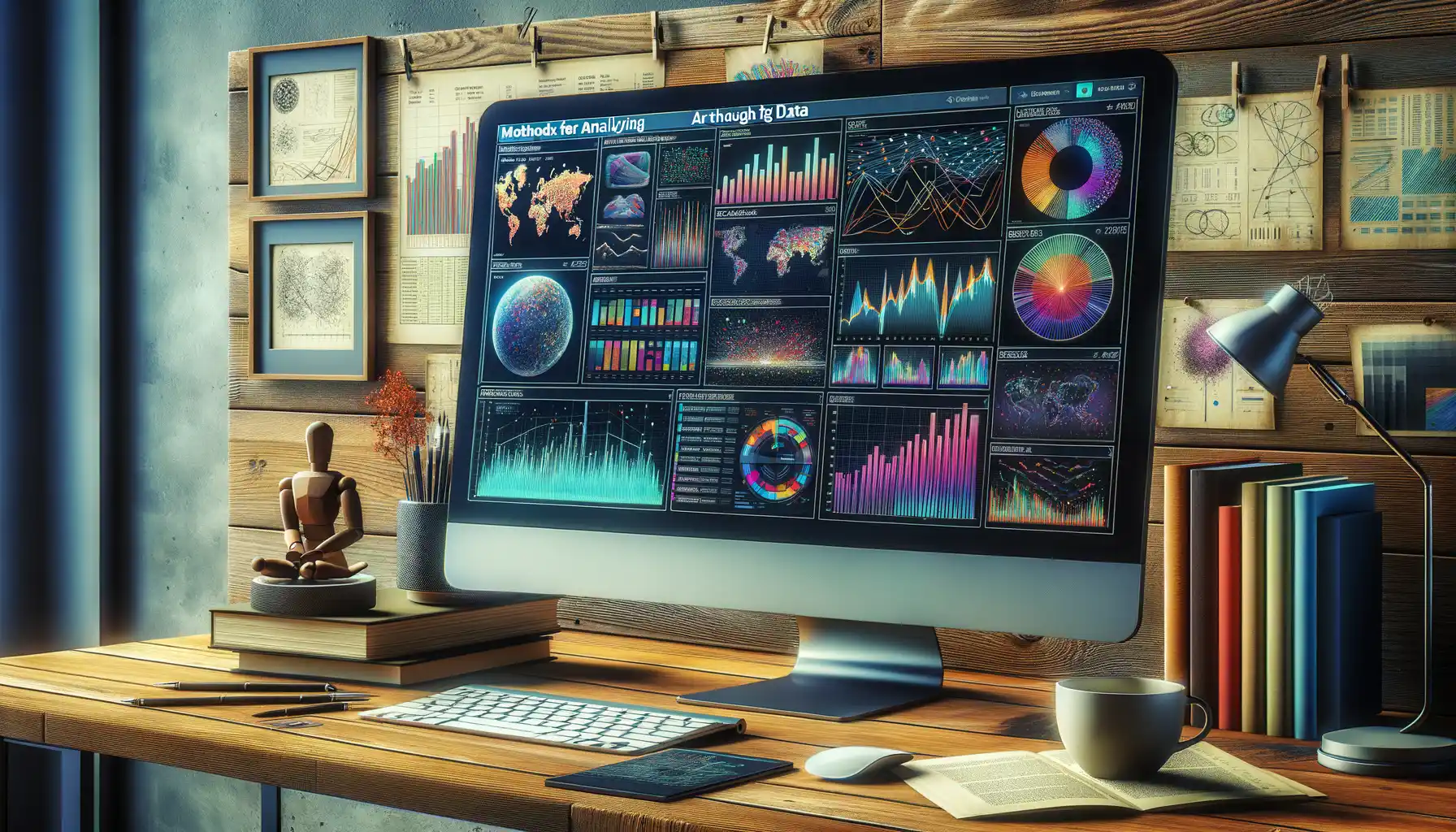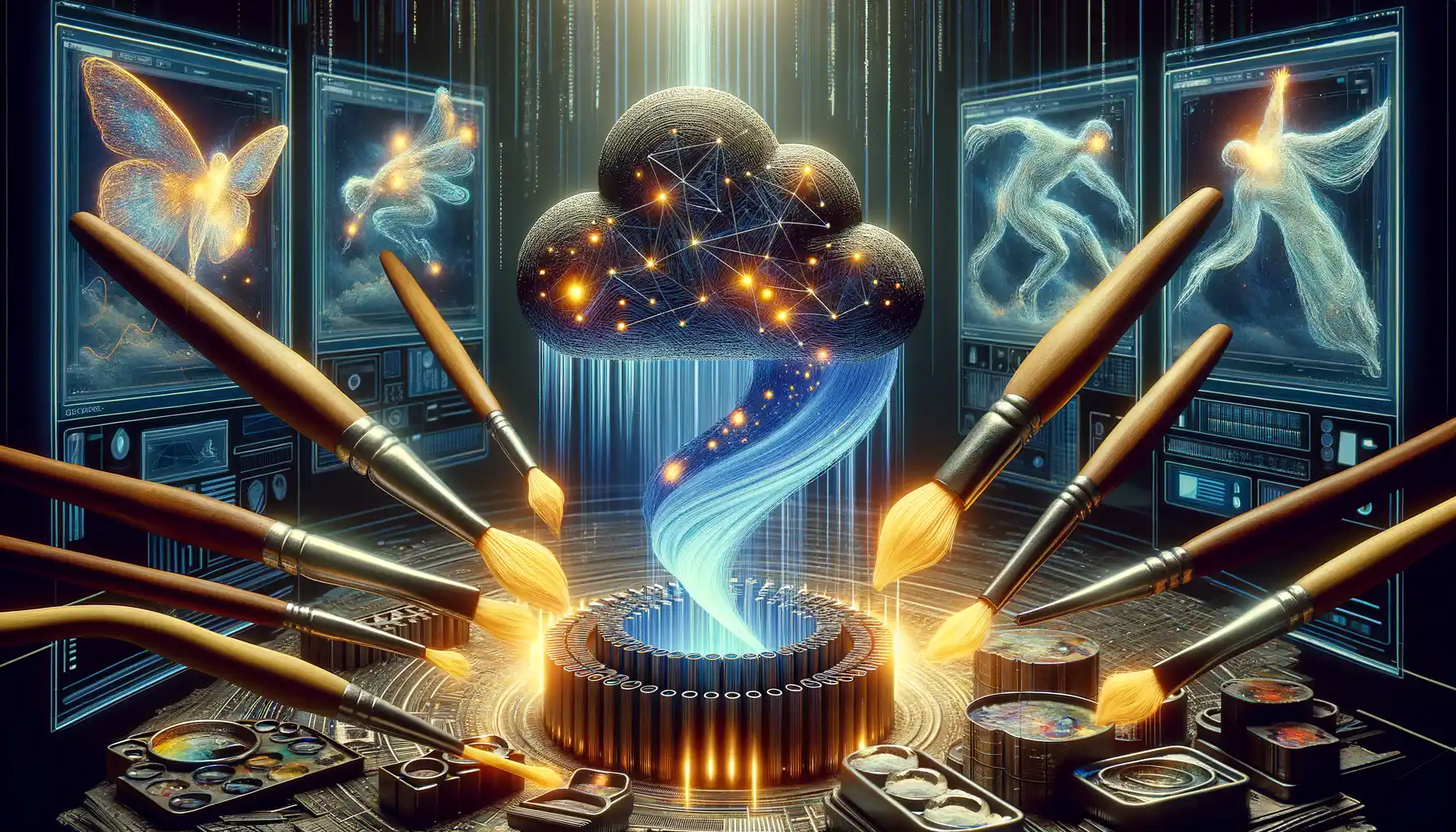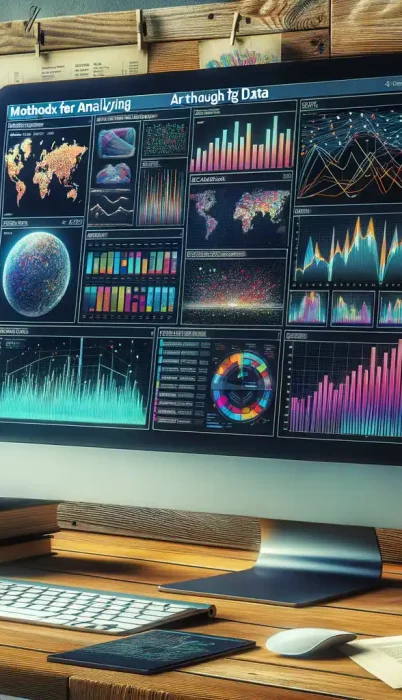Introduction to Big Data in the Art World
Imagine walking through a bustling art gallery—each visitor captivated by different pieces, each artist speaking their own visual language. Now, imagine a hidden guide behind the scenes: a kaleidoscope of numbers, patterns, and algorithms analyzing these interactions. Welcome to the fascinating intersection of art and big data, where creative expression meets cutting-edge technology.
The Canvas of Creativity Meets Data
At its core, big data is like the ultimate art collector, meticulously gathering millions of brushstrokes from across the globe. We’re talking about an immense pool of information: museum visitor data, social media engagement with artworks, online search trends for artists, and even auction sales records. But unlike a traditional collector, this one doesn’t just hoard—it deciphers. It reveals hidden stories about why certain styles go viral or how specific color palettes resonate with different generations.
Consider this: with the right analytics, museums can identify which exhibitions spark the most joy or frustration. Platforms like Instagram allow us to see which styles—whether it’s bold modernism or serene landscapes—trend in real time. The results? A richer picture of how human emotions and artistic preferences evolve.
Where Numbers Breathe Life into Art
It’s not all ivory towers and high-tech jargon. Big data gets incredibly personal. For instance, when curators harness audience insights, they’re essentially decoding taste—like a sommelier matching wine to your mood. Imagine:
- A museum predicting what types of exhibitions will delight younger audiences based on past visits.
- An artist uncovering which themes resonate most by analyzing reactions from social platforms.
- Collectors identifying works with future value based on data-driven forecasts.
With big data, we don’t just track trends—we anticipate them. It’s like painting a masterpiece with invisible tools, unlocking possibilities that were once unimaginable.
Methods for Analyzing Art Through Big Data

Using Big Data to Decode Artistic Secrets
Imagine walking into a gallery filled with thousands of paintings, sculptures, and digital masterpieces. How do we make sense of it all? That’s where the magic of big data steps in— turning chaos into an intricate, breathtaking mosaic of insight.
Advanced algorithms are now like the art world’s Sherlock Holmes, uncovering patterns hidden to the naked eye. For example, consider how computers analyze color usage. They don’t just see red or blue—they measure every hue, intensity, and blend. This lets us uncover trends, like how warm tones dominated Baroque art or how cool, muted shades define modern minimalism.
- Facial recognition tools scan portraits for shared characteristics across centuries: Do Mona Lisa’s serene expressions echo in contemporary illustrations?
- Text analysis software dives into artist statements and gallery catalogs, revealing the “buzzwords” that dominate certain styles or eras.
Even brushstrokes aren’t safe from scrutiny! With pixel-level precision, big data can compare Van Gogh’s swirling strokes against less famous imitators, proving—once again—that no detail is too small to matter.
It’s not just analysis. It’s uncovering the soul of art, buried in a sea of numbers. Can you feel it?
Applications of Big Data in Defining Art Trends

How Big Data Turns Numbers Into Art Narratives
Imagine standing in a buzzing gallery, surrounded by colorful works that spark curiosity. Now, picture hidden algorithms humming quietly behind the scenes, decoding the pulse of global art preferences. That’s exactly what Big Data does—it reveals patterns so nuanced they feel like whispers from the art world itself.
With billions of data points collected from social media, auction houses, exhibitions, and online sales platforms, analysts have cracked open an expansive treasure chest of art trends. For example, Big Data can identify surges in popularity for abstract compositions or show how digital art is captivating younger generations. It can even spot unexpected anomalies, like a sudden global fascination with medieval-inspired works.
Real-World Ways Big Data Shapes Art Movements
How exactly does this technology shape creativity? Let’s break it down:
- Tracking Instagram hashtags to see which colors, themes, or techniques are resonating with audiences right now.
- Analyzing museum attendance data to uncover which exhibits pull the largest crowds—and why.
- Scraping online marketplaces like Artsy to predict what types of works will rise in value next year.
Big Data doesn’t just observe: it connects dots like an artist creating meaning through chaos. And just like that, entire movements can be inspired, nurtured, and celebrated, as artists and collectors redefine the zeitgeist, one data point at a time.
Challenges and Ethical Considerations in Big Data Analysis

When Technology Meets the Complexity of Human Creation
Big data often feels like a superpower, doesn’t it? Imagine sifting through centuries of brushstrokes, color palettes, and cultural shifts in seconds. But hold on—this isn’t just a tech fairy tale. With great power comes, well… some serious dilemmas. Let’s talk about them.
On one hand, algorithms can be astonishingly precise. They’ll tell you that Van Gogh favored cobalt blue or that cubism spiked in popularity after Picasso’s “Les Demoiselles d’Avignon.” Neat, right? But here’s the catch: how do we teach a machine to understand *meaning*? The raw numbers behind an artwork can’t capture its soul—the anguish in Frida Kahlo’s self-portraits or the rebellion in Banksy’s street art. A number-crunching algorithm might miss nuances that are *deeply human*.
- Bias in Data: If the dataset skews European artworks, will diverse cultural narratives fade into obscurity?
- Privacy Concerns: Artistic creations uploaded online often get swept into big data tools without consent. Who “owns” these digital insights anyway?
Is Big Data Redefining Creativity—or Restricting It?
Let’s not forget the ethical conundrum of homogenization. When big data tells us “what sells,” does it subtly nudge artists to produce more of the same? Are we trading bold, avant-garde risks for algorithm-approved trends? For instance, what if Da Vinci had painted only what was trending in Florence at the time? Would we have the *Mona Lisa*—a masterpiece steeped in mystery? Food for thought.
In balancing innovation with integrity, the art world faces an exquisite dilemma: how do we embrace the future without losing the messy, chaotic magic of human creativity?
Future Outlook: Big Data’s Role in the Evolution of Art

Big Data as the Art World’s Crystal Ball
Imagine this: Big data is like a kaleidoscope, constantly shifting to reveal dazzling patterns, trends, and possibilities in the art world. But instead of just looking at beautiful fragments, it dives deeper—uncovering the whys, hows, and whos of artistic evolution. With digital footprints left behind by art lovers, collectors, and creators, big data provides a treasure trove of insights into what makes certain styles resonate with audiences across time and geography.
For instance, imagine an algorithm that doesn’t just track what’s trending now, but pinpoints emerging artistic voices—the creators you’ll be obsessed with before their names even hit your radar. It’s not far-fetched. By analyzing social media buzz, auction house results, or even museum attendance patterns, big data can forecast the next Picasso while the paint is still drying on their canvases.
The Symbiosis of Creativity and Technology
What’s particularly exciting is how big data doesn’t just predict art—it shapes it. Artists themselves are tapping into data, creating works that blur the line between human creativity and machine logic. Picture this:
- An installation that evolves its design based on live audience reactions.
- A painting whose colors correspond to city-wide emotional trends scraped from social platforms.
We’re entering an era where art isn’t just consumed; it reacts, transforms, and connects on a level we’ve never experienced before. Pretty astounding, isn’t it? What makes this all the more thrilling is that big data isn’t replacing human ingenuity—it’s magnifying it. From aiding curators to inspiring creators, it’s moving artistic expression into uncharted, electrifying directions.
